What is a Smart City?
A “Smart City” is a city that utilizes advanced technology and data-driven solutions to enhance the quality of life of its citizens, improve sustainability, and increase overall city efficiency. Smart cities work by drawing on data gathered from devices such as cameras, sensors, and other electronic devices that are interconnected, in order to find the solution best fit to optimize the efficiency of all city services.
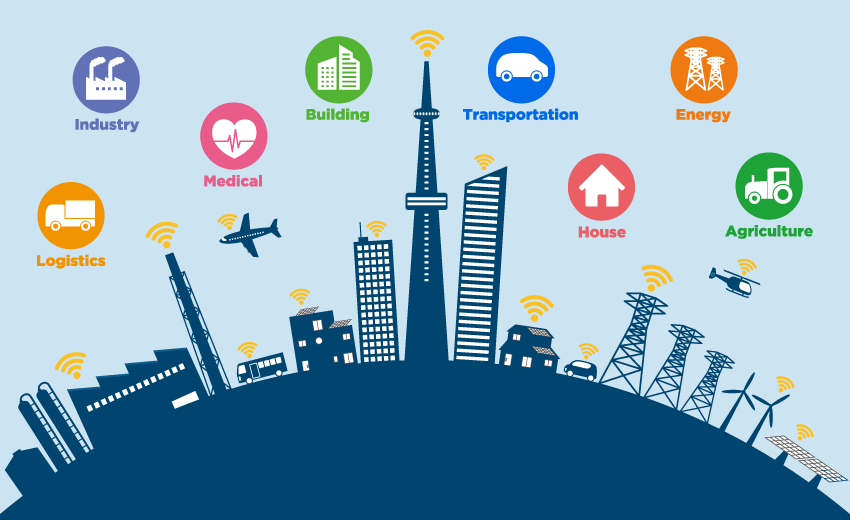
An essential part of smart cities is not just the technology used in the city, but how the technology is actively improving the well-being of citizens. Smart cities must be working towards making the city more livable, efficient, sustainable, and also empower citizens as a member of their community.
Image by Ribera Solutions via Ribera Solutions
Smart Sustainability
One important factor of a Smart City is how the city handles sustainability and uses technology to lessens the cities impact on the environment. Smart sustainability involves integration of smart technologies in urban systems, such as energy water, waste, and transportation, to improve efficiency and lessen a cities environmental impact.
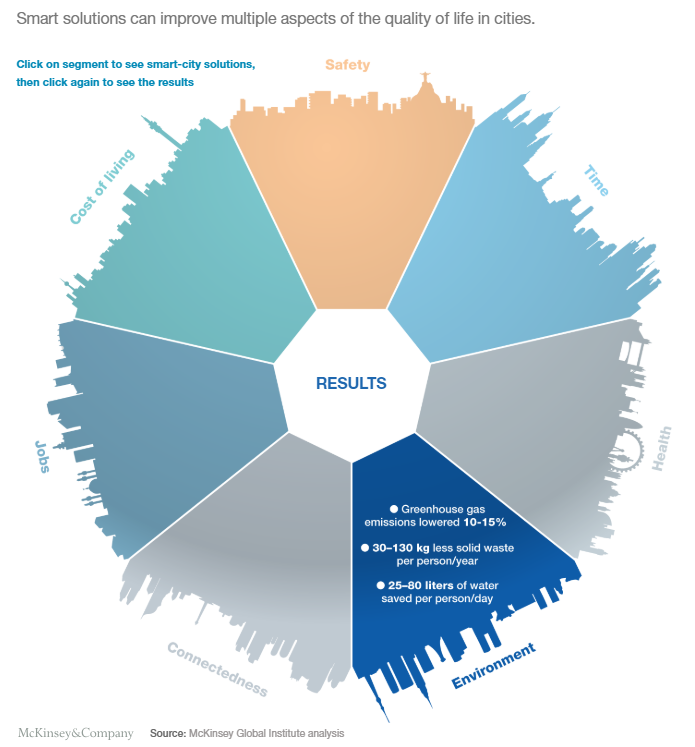
A smart sustainable city uses a variety of strategies to improve resource efficiency and enhance environmental quality. This can include the promotion of sustainable practices to its citizens such as the use of public transportation and creating bike-lanes, and the addition of green spaces. Cities can also switch to renewable energy systems such as solar and wind power that lessen the green house gas emissions of fossil fuels.
By incorporating smart sustainability practices, cities can have a positive environmental impact, while also creating a more livable and vibrant urban environment. Smart sustainability can help cities reduce carbon footprint emissions, conserve natural resources, and better adjust to the impacts of global warming and climate change. This can ultimately lead to lower costs of services, better city efficiency, and a higher quality of life.
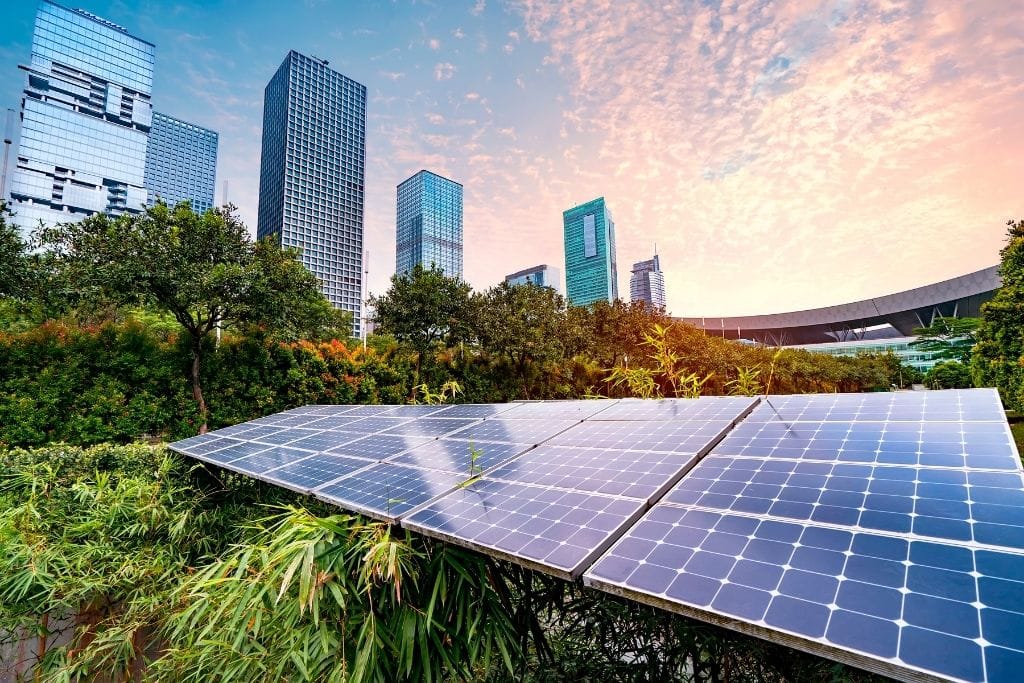
Image by Jane Marsh via Earth.org
Sustainability Projects
Supertrees – Gardens by the Bay
Singapore
The Supertrees project in Singapore is part of a large scale attraction called Gardens by the Bay that aims to create a unique urban green space and serve as a source of renewable energy and sustainability. The Supertrees project consists of 18 vertical gardens that range from 25 to 50 meters in height.
The objective of the project is to enhance the overall livability of Singapore’s urban environment by adding a destination attraction that is both visually stunning has a practical purpose. The super trees are integrated with photoreceptor cells that generate solar power as well as water harvesting technology to turn rain water into clean and usable water. Through this combination of appealing aesthetics and functional infrastructure the Supertrees serve as a sustainable cultural landmark for the area.
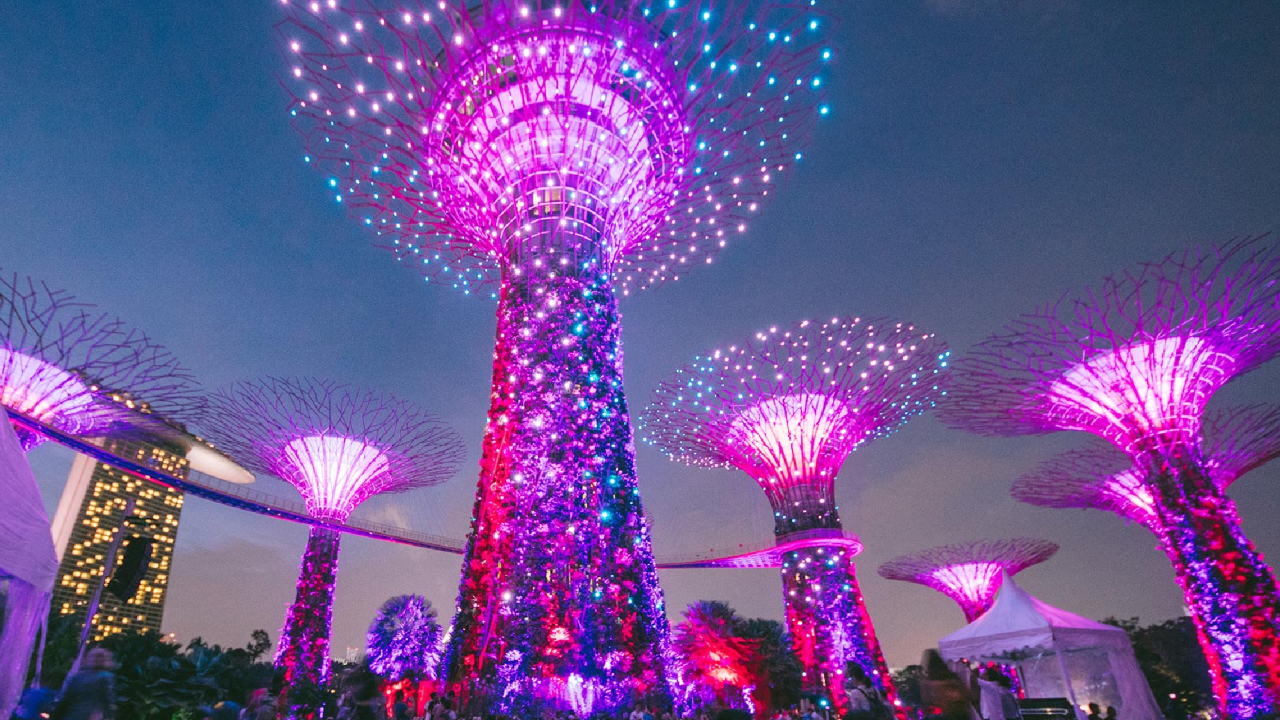
Image by Gardens by the Bay via GardensbytheBay
The goal of the Supertrees project is to promote smart and sustainable environmental practices and green technologies, while also creating a unique living space for residents and visitors to enjoy. The Supertrees are each equipped with thousands of beautiful smart lights that come on at night and are even used in the Garden Rhapsody show where their brilliance is displayed in sync with music, pyrotechnics, and other visual effects to provide a dazzling display to onlookers. The trees also feature a skyway and observation deck so visitors can view the rest of the park from an aerial view. The project hopes to become an eco-tourist destination that showcases sustainable practices and plants from around the world.
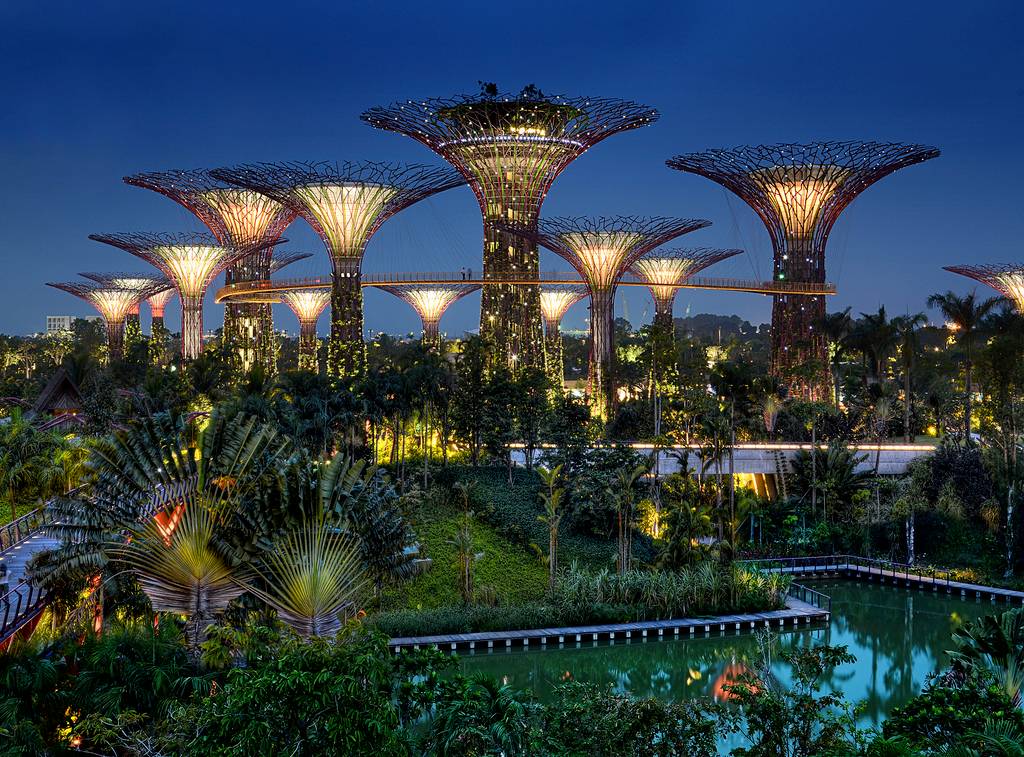
The Supertrees are composed of a concrete trunk that is reinforced with steel framing to give it a strong and sturdy core. Lining this trunk are planting panels where the trees and the surrounding park are home to over 220,000 species of plants including epiphytes, ferns, and vines to name a few. In addition to this the trees provide a habitat for a number of bird and insect species as well. The canopies also operate as temperature and humidity moderators by dispersing and absorbing heat and providing shade from the naturally hot Singapore climate. The Supertrees also have integrated technology that allows them to “communicate” with other parts of the park. The rainwater collected from the trees and the solar energy helps to provide water for plants and fountains as well as sustainable energy for some of the other buildings and exhibits.
I think this is a great example of an urban environment being integrated into nature through the use of technology. The biggest thing that stands out to me is the aesthetic of the trees. It’s a perfect blend of something that looks futuristic but also very natural at the same time and blends in perfectly with the surrounding flora of the entire park. I think the next step in this type of infrastructure is to incorporate living into a space like this where a person has access to modern day technologies, but also is immersed in a natural environment. Understandably taking a concept like the Supertrees and mass-producing it for residential life has many more potential challenges than what the existing Supertrees face, but it would increase renewable energy use and be a great way to promote the sustainable lifestyle to a massive amount of people.
Overall, the Supertrees project in Singapore represents the innovation that is possible in urban environments and serves as an example of the green infrastructure and large-scale environmental projects that contribute to the livability and quality of a city.
Green Pea – Eco Shopping Centre
Turin, Italy
The Green Pea shopping center project in Turin, Italy is an innovative initiative that aims to create a more sustainable retail space. The projects main objective is to provide an alternative to traditional shopping centers and malls by promoting environmentally friendly practices, food sustainability, and inspiring consumers to adopt a more eco-friendly and sustainable lifestyle.

The Green Pea shopping center spans over an area of over 15,000 square meters and consists of five floors that only contain sustainable products based around themes related to energy, movement, interior decor, clothing, and leisure. The floors title “Life”, “Home”, “Fashion”, “Beauty”, and “Ozio” each play host to different types of stores and brands based on their theme. The themes and sustainable products tie into the overall goal of the project which is to create a new retail experience for consumers that is rooted in sustainable practices and environmental wellbeing.

The building itself is designed in a sustainable way with a planted roof that features over 2,000 trees and plants that helps to regulate temperature in the building and reduce energy use as well photovoltaic panels on the outside of the building that generate solar energy from sunlight. The building is also made only with recyclable materials such as steel, iron, and glass, and the wood is reused from forests that were naturally destroyed by storms or recycled. The shopping center also features a rainwater harvesting system that is used to irrigate the green areas of the building and provide water for the toilets. The Green Pea promotes sustainable shopping and consuming by partnering with local vendors for produce as well as partnering with brands such as Patagonia, Timberland, and Ecoalf based on their own ethical and sustainability practices.
I think that the Green Pea serves as a beacon of hope for the consumer world. In today’s world of fast food, fast fashion, and overstimulation the Green Pea really brings us back to our roots and integrates this culture of consumerism with the sustainable practices that so many people believe in and want from the brands, food, and products we consume. My only concern with an idea like the Green Pea would be prices, obviously this is thinking from a capitalistic perspective but to make something like this on a global scale there would need to be a total revamp of consumer pricing so that these sustainable products are available to EVERYONE, not just the wealthy. Because unfortunately in the world we live in today sustainability is not inexpensive.
Overall, the Green Pea shopping center project is an ambitious and innovative initiative that seeks to redefine the concept of retail by promoting sustainable practices and inspiring a new generation of consumers to adopt a more environmentally conscious lifestyle. The project demonstrates that sustainability can be both functional in design and aesthetically pleasing, and it offers a model for future retailers to prioritize their sustainability and social responsibility.
Food Waste Biofuel
New York City, USA
The New York City food waste biofuel project is a project designed to reduce the amount of food waste generated by the city and covert that waste into a renewable energy source. The objective of the project is to address the issue of food waste, which serves as a significant contributor to greenhouse gas emissions and landfill waste.
 The goal of this project is to promote renewable energy sources by processing over 250 tons of food waste per day, generating enough renewable energy to heat over 5,000 homes. The project also aims to reduce annual greenhouse gas emissions by over 90,000 metric tons by diverting food waste from landfills into an renewable energy source.
The goal of this project is to promote renewable energy sources by processing over 250 tons of food waste per day, generating enough renewable energy to heat over 5,000 homes. The project also aims to reduce annual greenhouse gas emissions by over 90,000 metric tons by diverting food waste from landfills into an renewable energy source.
The Food Waste Biofuel project collects food waste from residential and commercial areas throughout New York and transports the waste to the main processing facility where through a process called anaerobic digestion the food is broken down by microorganisms that convert the waste into a gas that can then be converted into renewable energy in the forms of electricity and heat. The remaining food waste byproduct can also be reused as a fertilizer for plants. One of the biggest benefits of the project is that it reduces the amount of food waste that ends up in a landfill. Landfills take up massive amounts of land in a city and also product large amounts of methane gas through the decomposition and incineration of trash and food waste. By redirecting some of the food waste to a biofuel facility the city is able to reduce greenhouse gas emissions and generate sustainable energy.
Overall, the Food Waste Biofuel project demonstrates the potential of renewable energy sources and addresses environmental challenges. The project has helped raise awareness about the issue of food waste and importance of sustainable waste management practices and serves as a model for other cities to implement in order to reduce their own environmental footprint and transition to a more sustainable future.
Resources:
5, Steve Cohen |December, and Steve Cohen. “New York City’s Food Waste and the Circular Economy.” State of the Planet, 5 Dec. 2022, https://news.climate.columbia.edu/2022/12/05/new-york-citys-food-waste-and-the-circular-economy/.
“Garden Rhapsody.” Gardens by the Bay, https://www.gardensbythebay.com.sg/en/things-to-do/calendar-of-events/garden-rhapsody.html.
Johnson, Katie. “Environmental Benefits of Smart City Solutions.” Foresight, 5 May 2022, https://www.climateforesight.eu/articles/environmental-benefits-of-smart-city-solutions/#:~:text=Smart%2Dcity%20solutions%20such%20as,saved%20per%20person%20per%20day.
Kuriositas. “The Supertrees of Singapore.” Kuriositas, https://www.kuriositas.com/2013/09/the-supertrees-of-singapore.html.
Marsh, Jane. “What Are the Most Important Features of Sustainable Cities and Society?” Earth.Org, Earth.Org, 11 Jan. 2022, https://earth.org/what-are-the-most-important-features-of-sustainable-cities-and-society/.
“Retail: Discover Green Pea, an Eco-Friendly Shopping Hub.” The, https://www.the-spin-off.com/news/stories/Retail-Discover-Green-Pea-an-eco-friendly-shopping-hub–15660.
Ribera Solutions. “Smart City, Iot and Ai.” Ribera Solutions, 31 Jan. 2019, https://riberasolutions.com/smart-city-iot-and-ai/.
Said-Moorhouse, Lauren. “Solar-Powered ‘Supertrees’ Breathe Life into Singapore’s Urban Oasis.” CNN, Cable News Network, 10 June 2015, https://www.cnn.com/2012/06/08/world/asia/singapore-supertrees-gardens-bay/index.html.
“The Building • Green Pea.” Green Pea, 17 Nov. 2021, https://www.greenpea.com/en/building/.
Toli, Angeliki Maria, and Niamh Murtagh. “The Concept of Sustainability in Smart City Definitions.” Frontiers, Frontiers, 1 May 2020, https://www.frontiersin.org/articles/10.3389/fbuil.2020.00077/full.
Leave a Reply